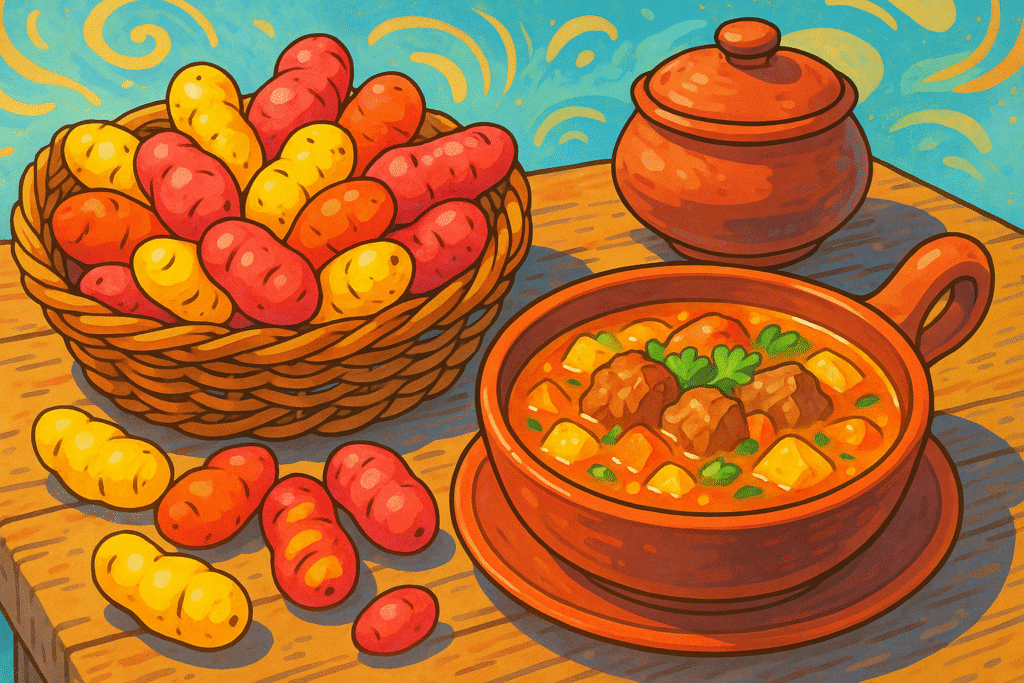Ulluco (Ullucus tuberosus)

About Ulluco
Ulluco is a small, vibrantly colored tuber with a waxy texture and slightly earthy, beet-like flavor. When cooked, it becomes slippery and smooth — often used in soups and stews across the Andes.
It’s as visually stunning as it is culturally meaningful.
The History of Ulluco
Domesticated over 4,000 years ago in the Andes, ulluco is a critical part of Indigenous agriculture in Peru, Bolivia, and Ecuador. It was cultivated alongside potatoes and oca, forming the backbone of Andean survival crops.
It’s still a staple in rural highland cooking and a symbol of food sovereignty and biodiversity.
The Science of Ulluco
Ulluco is rich in carbohydrates, fiber, and vitamin C. It also contains betalains, the same antioxidants found in beets, which give it vibrant hues.
Its slippery texture is due to mucilage — a water-soluble fiber that’s soothing for digestion.
The Geography of Ulluco
Grown primarily in the high altitudes of the Andes — between 2,500 and 4,000 meters — ulluco is extremely resilient, tolerant to cold, and grown with little to no irrigation.
It’s a niche crop outside South America but increasingly available at specialty markets.
Varieties of Ulluco
Puca
Red-skinned with yellow flesh. Rich in color and flavor.
Q’ello
Bright yellow variety. Mild and sweet — used in stews.
Mullu
Speckled or multicolored. Prized for aesthetic appeal and creamy texture.
T’ika
Small and round, with pink and red stripes. High in mucilage.
Green Ulluco
Less common. Mildest flavor with slightly grassy notes.
FAQs All your questions about Ulluco: answered
Is ulluco related to potatoes?
Not directly — though they’re often grown together in the Andes, ulluco belongs to a different botanical family.
Why is ulluco so slippery?
It contains mucilage — a natural fiber that creates a gelatinous texture when cooked.
Can ulluco be eaten raw?
Yes — though uncommon. It has a crunchy texture and beet-like flavor when raw.
Where can I find ulluco outside South America?
Look in Latin American or Peruvian specialty markets. It’s rare, but sometimes available frozen or dried.